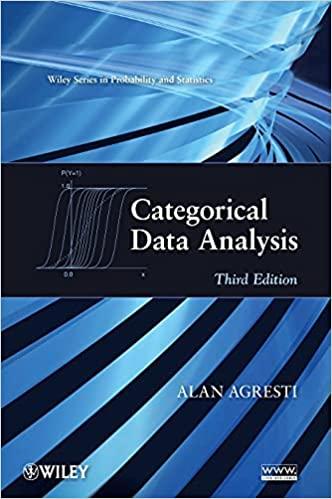3.18 Table 3.14 shows the results of a retrospective study comparing radiation therapy with surgery in treating
Question:
3.18 Table 3.14 shows the results of a retrospective study comparing radiation therapy with surgery in treating cancer of the larynx. The response indicates whether the cancer was controlled for at least two years following treatment. Table 3.15 shows SAS output. Some R output looks like:
> fisher.test(matrix(c(21,2,15,3),ncol=2,byrow=TRUE), alternative="two.sided") p-value = 0.6384
> fisher.test(matrix(c(21,2,15,3),ncol=2,byrow=TRUE), alternative="greater") p-value = 0.3808
> fisher.test(matrix(c(21,2,15,3),ncol=2,byrow=TRUE), alternative="less") p-value = 0.8947
a. Report and interpret the P-value for Fisher's exact test with (i) Ha: θ > 1 and
(ii) Ha: θ ≠ 1. Explain how the P-values are calculated.
b. Find and interpret the mid P-value for Ha: θ > 1. Summarize advantages and disadvantages of this type of P-value.
Table 3.14 Data for Exercise 3.18 on Therapy for Cancer of Larynx Surgery Radiation therapy Cancer Controlled 21 15 Cancer Not Controlled 2
3 Source: Reprinted with permission from W. M. Mendenhall, R. R. Million, D. E.
Sharkey, and N. J. Cassisi, Int. J. Radiat. Oncol. Biol. Phys. 10: 357-363, 1984,
© Pergamon Press.
Table 3.15 SAS Output for Exercise 3.18 on Therapy for Cancer of Larynx Fisher's Exact Test Cell (1,1) Frequency (F)
21 Left-sided Pr <= F 0.8947 Right-sided Pr >= F 0.3808 Table Probability (P)
0.2755 Two-sided Pr <= P 0.6384
Step by Step Answer:






